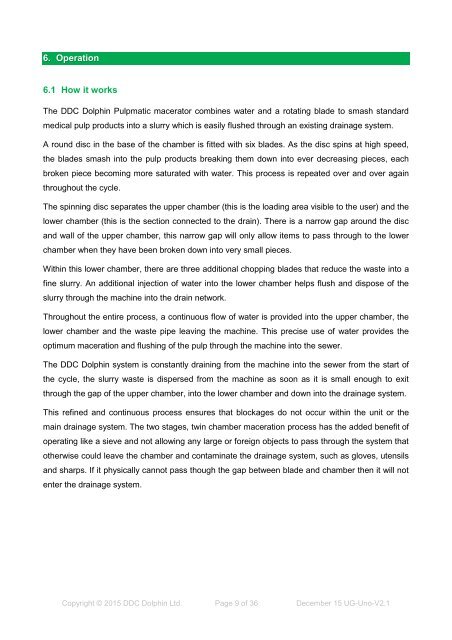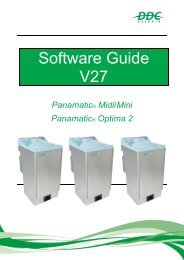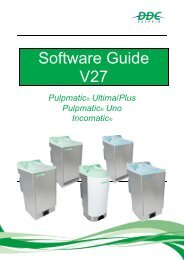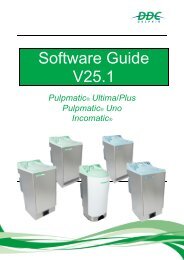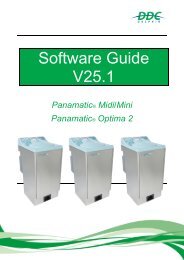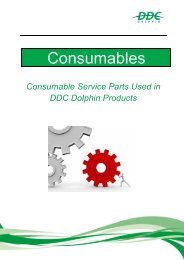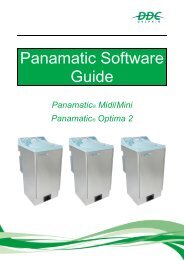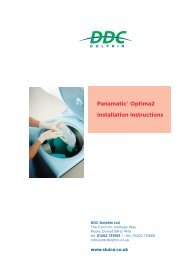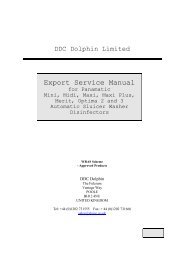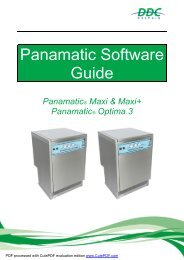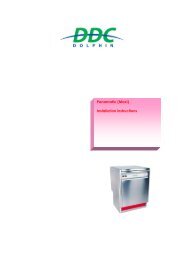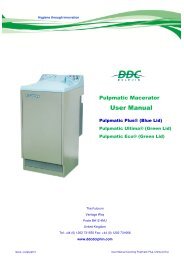User Guide Pulpmatic Uno V2.1
You also want an ePaper? Increase the reach of your titles
YUMPU automatically turns print PDFs into web optimized ePapers that Google loves.
6. Operation<br />
6.1 How it works<br />
The DDC Dolphin <strong>Pulpmatic</strong> macerator combines water and a rotating blade to smash standard<br />
medical pulp products into a slurry which is easily flushed through an existing drainage system.<br />
A round disc in the base of the chamber is fitted with six blades. As the disc spins at high speed,<br />
the blades smash into the pulp products breaking them down into ever decreasing pieces, each<br />
broken piece becoming more saturated with water. This process is repeated over and over again<br />
throughout the cycle.<br />
The spinning disc separates the upper chamber (this is the loading area visible to the user) and the<br />
lower chamber (this is the section connected to the drain). There is a narrow gap around the disc<br />
and wall of the upper chamber, this narrow gap will only allow items to pass through to the lower<br />
chamber when they have been broken down into very small pieces.<br />
Within this lower chamber, there are three additional chopping blades that reduce the waste into a<br />
fine slurry. An additional injection of water into the lower chamber helps flush and dispose of the<br />
slurry through the machine into the drain network.<br />
Throughout the entire process, a continuous flow of water is provided into the upper chamber, the<br />
lower chamber and the waste pipe leaving the machine. This precise use of water provides the<br />
optimum maceration and flushing of the pulp through the machine into the sewer.<br />
The DDC Dolphin system is constantly draining from the machine into the sewer from the start of<br />
the cycle, the slurry waste is dispersed from the machine as soon as it is small enough to exit<br />
through the gap of the upper chamber, into the lower chamber and down into the drainage system.<br />
This refined and continuous process ensures that blockages do not occur within the unit or the<br />
main drainage system. The two stages, twin chamber maceration process has the added benefit of<br />
operating like a sieve and not allowing any large or foreign objects to pass through the system that<br />
otherwise could leave the chamber and contaminate the drainage system, such as gloves, utensils<br />
and sharps. If it physically cannot pass though the gap between blade and chamber then it will not<br />
enter the drainage system.<br />
Copyright © 2015 DDC Dolphin Ltd. Page 9 of 36 December 15 UG-<strong>Uno</strong>-<strong>V2.1</strong>


